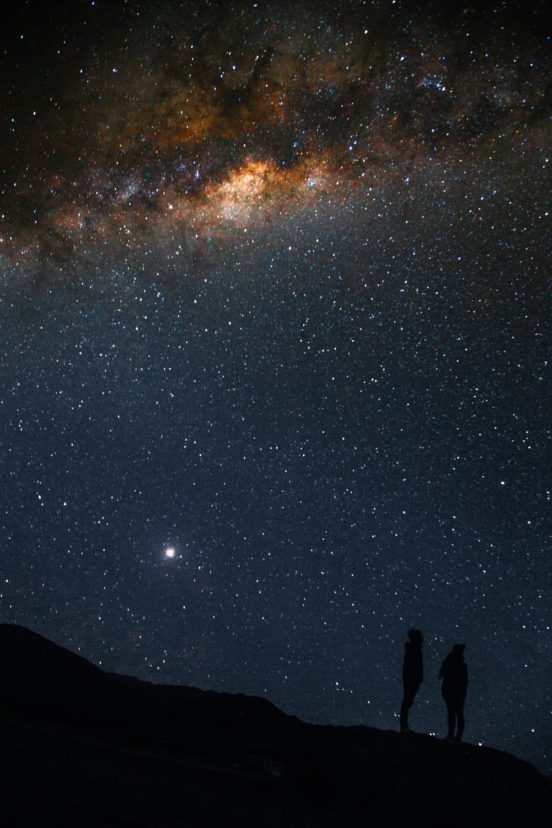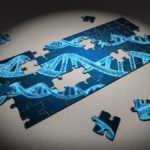When first tasked with creating a metaphor for curriculum, I was able to construct a science-leaning metaphor that speaks to my inclinations as both a science educator and a decidedly linear thinker. My metaphor – curriculum as the night sky – was informed by Egan’s (1978) consideration of what and how of curricular design and structure. My thought was that the what and how changed with context like a geographically changing view of stars in the night sky. In this interpretation, I considered the what as the important aspect of the curriculum – the selected outcomes forming the section of night sky up for educational exploration, either in its entirety, or by specific section; with Tyler’s (2013) shifting societal requirements for developing a “well-educated person” (p.59) representative of the shifting scientific interpretation of the stars and cosmos. It was my contention that the how be left out of the curriculum. The how was to be determined by the educator, on the basis of individual student need, consisting of the tools and strategies needed to scaffold each student in their exploration – representative of the scientific advancements that allowed us to explore the exquisite detail of celestial objects. Taken together, these things allowed for a relevant and transferable education that encouraged exploration of a new section of sky. During this course, we were asked: Is curriculum an object, an intention, an action? Throughout this course, my use of metaphor has not shifted, but this question has changed my interpretation.
The question sets up a false trichotomy when curriculum (and my resulting metaphor) is in fact all three possibilities at once. As object, the curriculum is still a defined document created within context. It is the objectively viewable section of night sky. It is the planned curriculum mentioned by reconceptualist Ted Aoki (Olsen, 2012), full of the “clearly defined purposes” (p.60) of technical-rationalist R. W. Tyler (Tyler, 2013). Educators are the embodiment of curriculum as intention. They are the selectors of resources and learning strategies that fulfill the potential of night sky viewing. They are the progressivist ideal that infuses the curriculum with consideration for social conditions and student need (Dewey, 1925); the intention of education as “a process of living and not a preparation for future living” (Dewey, 1925, p.38). Students are the curriculum as action. They determine the interpretations and meaning taken from those viewing opportunities presented by the educators. Their history, experiences and interactions are Aoki’s live(d) curriculum (Olsen, 2012), marking the distinctiveness of each learner, where curriculum is “making room for our students’ personalities and interests” (Olsen, 2012, para. 10). Curriculum, as night sky, is object, intention, and action at once – it is a document brought to life by the community of educators and students.
What began as a science-leaning and objective metaphor has become something complex and subjective. Where previously I wrote that it is the curriculum that determines the perspective, I now realize it is the educator that must allow for student-led direction that is not within our control; to accept as Aoki states, “their imprints on the curriculum to help shape its implementation” (Olsen, 2012, para. 9); my metaphor was focused on the curriculum-as-planned, as opposed to the lived curriculum. Looking forward, I must allow the students to look up into the nights sky and explore the meaning within themselves, without restrictions. Investigate the implicit curriculum in my classroom setup and consider how I can remove barriers and infuse digital technology in a way that opens their learning without limiting it.
Recognizing that “interests are the signs and symptoms of growing power” (Dewey, 1925, p.38), I will move forward by giving students space to collaborate and co-construct the aim and significance of their own subjective view of the night sky. I will make more room for anticipation and augmentation within the curriculum as object, pushing students to take what they need out of it, framed by their perspectives. The metaphor of the nights sky is still apt, but it has morphed from a prescribed, educator-led experience, into a rhizomatic, student-led action (Cormier, 2008). As explained by Dave Cormier:
“(C)urriculum is not driven by predefined inputs from experts; it is constructed and negotiated in real time by the contributions of those engaged in the learning process.” (2008, para. 12)
Image by Maarten Verstraete – free to use from UnSplash
References
Cormier, Dave. (2008). Rhizomatic Education: Community as Curriculum – Dave’s Educational Blog. Retrieved July 25, 2020, from http://davecormier.com/edblog/2008/06/03/rhizomatic-education-community-as-curriculum/
Dewey, J. (1925). My Pedagogic Creed. Journal of Education, 101(18), 490–490. https://doi.org/10.1177/002205742510101803
Egan, K. (1978). What Is Curriculum? Curriculum Inquiry, 8(1), 65–72. https://doi.org/10.2307/1179791
Olsen, Sarah (2012). Celebrating an Aokian Experience: A Curriculum Scholar Review for EDU 6102 by Sarah Olson. Retrieved July 25, 2020, from https://www.curriculumtheoryproject.ca/2012/03/celebrating-an-aokian-experience-a-curriculum-scholar-review-for-edu-6102-by-sarah-olson/
Tyler, R. W. (2013). BASIC PRINCIPLES OF CURRICULUM AND INSTRUCTION. Curriculum Studies Reader E2. https://doi.org/10.4324/9780203017609-14






